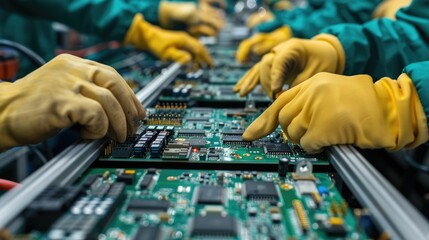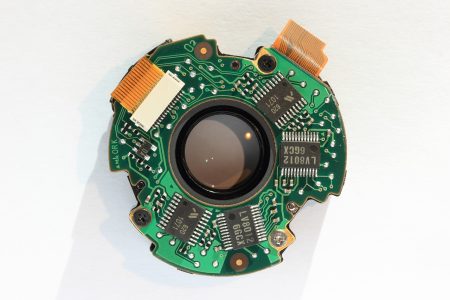- +86-755-23012705
- Building 3, Jinfeng Industrial Park, Fuyong Street, Baoan District, Shenzhen ,China
- [email protected]
As the electronics industry continues to evolve, the demand for advanced printed circuit board (PCB) technologies grows. One such innovation is the rigid-flex PCB, which combines the benefits of rigid and flexible boards. This design allows for more compact, lightweight, and versatile electronics, making it ideal for applications in smartphones, medical devices, and aerospace technology. However, integrating surface mount devices (SMD) onto rigid-flex PCBs presents several unique challenges that engineers must navigate to ensure optimal performance and reliability.
Rigid-flex PCBs consist of both rigid and flexible substrates. The rigid sections provide structural support and house components, while the flexible sections allow for bending and shaping in compact spaces. This hybrid design enables innovative product development but introduces complexities in manufacturing and assembly, particularly regarding SMD placement.

One of the primary challenges in SMD for rigid-flex PCBs is ensuring material compatibility. Rigid-flex boards are made from a combination of materials, typically including FR-4 (a type of fiberglass epoxy) for rigid sections and polyimide for flexible areas. These materials have different thermal expansion coefficients, which can lead to issues during soldering and assembly.
When exposed to heat during the soldering process, the different rates of expansion and contraction can cause delamination or stress fractures in the board. Engineers must carefully select materials and manage the thermal profiles used in assembly to mitigate these risks.
The soldering process for SMD components on rigid-flex PCBs can be particularly challenging due to their unique structural properties. The flexibility of certain sections can lead to warping or distortion when heat is applied, affecting the quality of solder joints.
Moreover, achieving consistent solder paste application is crucial. The varying thicknesses of the rigid and flexible sections can make it difficult to maintain uniform solder paste deposition. This inconsistency can result in insufficient solder on some pads while causing excess solder on others, leading to poor electrical connections or solder bridges.
To address these challenges, engineers often utilize advanced soldering techniques such as reflow soldering, selective soldering, or even laser soldering, which provide better control over the heat applied to the board.
Mechanical stress is another critical concern for SMD placement on rigid-flex PCBs. As these boards are often subjected to bending and flexing during use, the components mounted on them must withstand significant mechanical strain.
The reliability of solder joints is paramount; if the solder joints fail, the entire device could malfunction. Engineers must perform extensive reliability testing, including thermal cycling and mechanical flex testing, to ensure that the solder joints can withstand the stresses imposed during the device’s operational life.

Implementing Design for Manufacturing (DFM) principles is essential when working with rigid-flex PCBs. The design must account for the unique characteristics of the materials and the assembly processes involved.
Considerations include the placement of SMD components, the routing of traces, and the design of vias and pads. The flexibility of certain sections must be factored into the design to ensure that components do not become dislodged or damaged during bending.
Collaboration between design and manufacturing teams is critical to optimizing the design for the manufacturing process, ensuring that the final product meets quality and reliability standards.
In high-frequency applications, maintaining signal integrity is paramount. Rigid-flex PCBs can introduce additional challenges due to the different dielectric materials used and the presence of flexible sections, which may affect impedance and signal loss.
Engineers must carefully analyze the PCB layout to minimize signal degradation, which involves precise control over trace width, spacing, and routing. Additionally, simulation tools can help predict how signals will behave in various scenarios, allowing engineers to make informed design decisions.

While rigid-flex PCBs offer significant advantages in terms of space-saving and design flexibility, they also introduce a range of challenges in SMD placement. From material compatibility and soldering techniques to mechanical stress and signal integrity, engineers must navigate these complexities to ensure the reliability and performance of the final product.
By adopting advanced manufacturing techniques, implementing DFM principles, and conducting thorough testing, the industry can overcome these challenges and harness the full potential of rigid-flex PCBs. As technology continues to advance, addressing these issues will be crucial in driving innovation and meeting the ever-evolving demands of the electronics market.
Take Your Projects to New Heights with XPCB Limited
XPCB Limited offers top-notch PCB manufacturing, quick-turnaround prototyping, and turnkey PCBA services designed to make your projects shine. Count on us to bring your ideas to life with efficiency and quality. Your success matters to us, and we’re here to make your innovation journey smooth and rewarding.






XPCB Limited is a premium PCB & PCBA manufacturer based in China.
We specialize in multilayer flexible circuits, rigid-flex PCB, HDI PCB, and Rogers PCB.
Quick-turn PCB prototyping is our specialty. Demanding project is our advantage.
Tel : +86-136-3163-3671
Fax : +86-755-2301 2705
Email : [email protected]
© 2024 - XPCB Limited All Right Reserve
